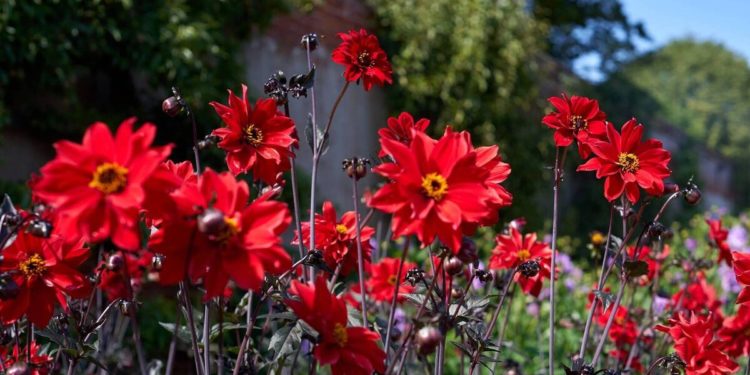April is a funny month in the garden, not a belly-laugh funny, but, it can be peculiar. The days are noticeably longer, some of the days will even be hot but then, out of the blue, it can change to cold, wet, even sleet and hail. Whether or which, it is time to get going on planting tasks that may have been started in March but under caution.
Planting summer perennials from tubers, bulbs and corms will lead to masses of colour in the months ahead.
Dahlias, the cottage garden favourites are enjoying somewhat of a resurgence in popularity over the last number of years.
They are divided into groups such as Pompom, Dinnerplate, Cactus, Decorative, Single and more and all of them are exquisite to look at. We used to grow lots of them at home when I was a child and I used to love examining all the different types and cutting them for use indoors in a vase.
You may or may not have a preference when it comes to flower type, but the bees and other pollinating insects certainly do. They love the simple, single and semi-double forms where the nectar and pollen is easily accessible. The more intricate the flower form, the harder it is for them to feed. If you haven’t grown any of the Bishops then this is the year to start, believe me you won’t be sorry. Dahlia Bishop of Llandaff is, perhaps the best known of them all, with scarlet red flowers on top of mahogany coloured foliage.
Dahlia Bishop of Dover has similarly chocolate coloured foliage and stems with the most beautiful, single, white flowers which are tinged lilac-pink.
Bishop of Canterbury is more pink than red and Bishop of York produces beautiful, single yellow blooms, Bishop of Oxford is a really lovely orange and Bishop of Auckland is such a rich, royal red, as to be like velvet. The Bishop of Leicester is a beautiful pale pink, somewhat reminiscent of summer berry sorbets or a raspberry ripple ice cream, a really fresh and vibrant looking bloom in the summer garden.
There are many more single and semi-double Dahlia varieties from which to choose but whichever one makes their way into your garden, they won’t disappoint. Easy to grow, colourful, so cheerful, alive with wildlife and flowering into early winter. Whether you mix and contrast varieties for vibrancy and show-stopping displays or whether you wish to create a more restful effect, using complementary colours of a similar palette is completely up to yourself.
Start Dahlia tubers off now in pots of good quality, well-drained soil or compost now, for planting out over the next few weeks. Alternatively, you could plant the tubers directly outside in a well-drained and sunny situation.
Gladiolus are another summer staple that can be planted out as bulbs now. Though you can, there is no need to start these off in pots. Simply plant the bulbs a few inches beneath the soil surface exactly where you want them to grow and bloom. Make sure it’s somewhere sunny and protected from any kind of strong winds. You will also need to have stakes, in the form of bamboos or similar, to hand for, in all but the most sheltered of areas, they will need staking. A good idea, if like me, you feel that life is too short for staking Gladiolus, is to grow them amongst other upright perennials and shrubs that will support them.
My quintessential summer flower is the Lily, whether grown by the potful on a patio or throughout beds and borders, for me, they announce high summer, vibrancy, beauty and freshness with their aesthetic beauty and their magical aroma.
There are so many
different groups and types of Lilium it could seem like a daunting genus to begin on but my advice is to forget about all the botany and science and just dive right in. Find some varieties that you like, source the bubs and plant. They are really easy and pretty much trouble-free to grow.
The simple and elegant Regal Lily, Lilium regale will take some beating, in my eyes as a choice. Flowers of pure white with distinct yellow markings on the throat and with the most magnificent scent are produced on top of stems about 1.5m in height. Lilies can be planted anytime during late autumn into late spring for flowering during mid to late summer.
The Belladonna Lily, not technically a Lily but an Amaryllis, but as I say, let’s not get bogged down in the detail, can also be planted directly outside now for flowering in late summer.
Plant these, ideally at the base of a south-facing wall where the heat trapped by the wall and soil will encourage the best of blooms.
These are beautiful pink, trumpet-shaped, flowers that come atop naked stems of about 70cm in height which emerge from the ground after the foliage dies back.




